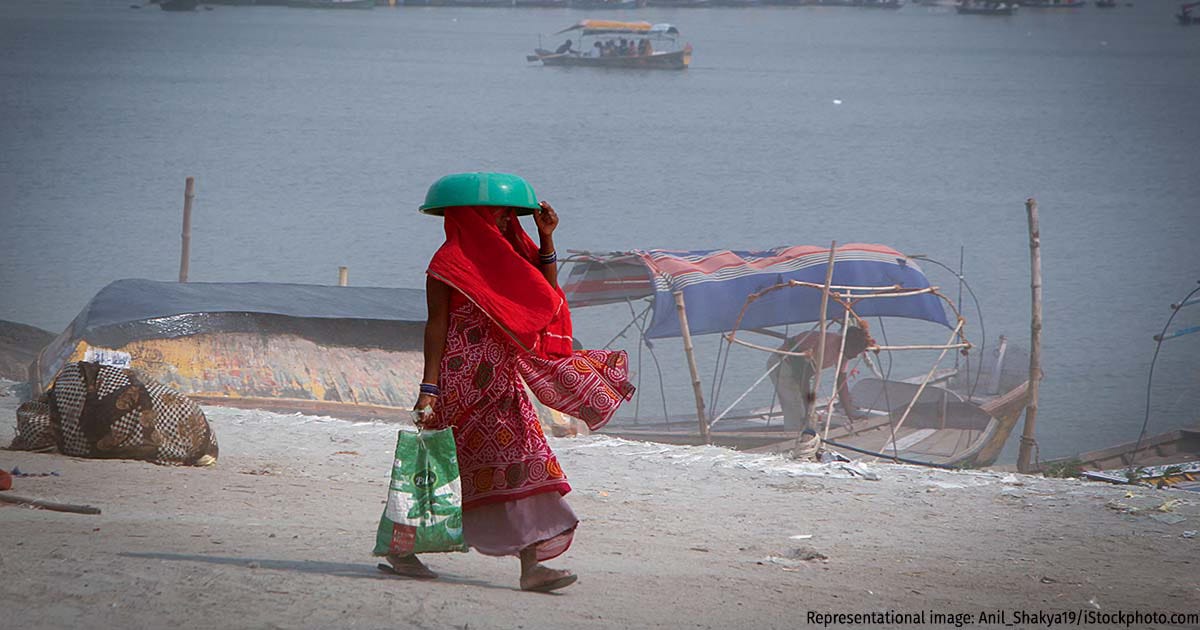Cracking India's 'Mystery' Diseases
Also this week, how humidity can increase heat stress, and how changing climate is pushing people out of Sundarbans for work
As India heats up, literally and figuratively, three unfolding crises reveal a stark truth: the country's most vulnerable are bearing the brunt of a changing climate, an overstretched public health system, and an economy that offers escape routes that are paved with risk.
In the Sundarbans, rising seas and ruined farms push families into unsafe migration and trafficking traps. In Gujarat and elsewhere, disease outbreaks expose the fragility of rural healthcare and the perils of poor public communication. Meanwhile, in humid, sweltering cities like Mumbai, the true impact of heat is underestimated, with humidity quietly intensifying health risks for millions.
These are not isolated events—they are symptoms of a deeper systemic failure to respond to compounding threats that blend climate, health, and inequality into a growing emergency. In this episode of our newsletter, we feature these urgent stories and the question that connects them all: what kind of future are we building, and for whom?
The Danger of 'Mystery Diseases': What Kachchh Teaches Us
In September 2024, a sudden spate of deaths in Gujarat’s Kachchh district triggered alarm—and headlines about a “mystery disease.” But behind the fear was a complex, solvable public health puzzle. Officials traced the cause to a viral respiratory infection worsened by bacterial co-infections and comorbidities. Similar outbreaks—exacerbated by rainfall, malnutrition, and weak rural health infrastructure—were reported from Chhattisgarh, Rajasthan, and Jammu & Kashmir.
Experts caution that labeling such outbreaks as “mystery diseases” only fuels panic. Most diseases, they argue, can be identified with careful epidemiological investigation and timely public health messaging. But gaps remain: rural understaffing, reliance on faith healers, poor communication, and lack of community trust hinder rapid response.
The lesson is clear: no illness is too complex to explain, and the public must be treated as a partner, not a bystander. Transparency, timeliness, and trust are key to tackling outbreaks in an era of climate and health unpredictability, cautions Charu Bahri in this report.
Perspiration Nation: India’s Humid Heat Crisis
India’s heat crisis is no longer just about soaring temperatures—it’s about oppressive humidity as well. On April 30, Mumbai’s 33.9°C day felt like 46°C due to 69% humidity, a stark reminder that ‘felt heat’ or heat stress is becoming deadlier.
Research shows that above 32°C, every 10% rise in humidity increases physiological strain by 22%, especially for outdoor workers. Coastal states and megacities like Chennai and Mumbai are hardest hit, with rising urbanisation and falling green cover amplifying the effect. Yet, official heatwave alerts still hinge mostly on dry-bulb temperatures, overlooking humid heat’s lethal impact.
A Chennai-based study now urges policymakers to revise heat action plans, incorporating humidity-based thresholds. With 259 billion labour hours lost annually due to humid heat and climate change intensifying the trend, India urgently needs to shift from temperature-only metrics to composite indicators like heat index or wet bulb globe temperature. Ignoring humidity may cost lives—and livelihoods. Tanvi Deshpande reports.
Climate Migration and the Vanishing Future of the Sundarbans
As rising seas and relentless cyclones ravage the Sundarbans, desperation drives a wave of migration—often from the frying pan into the fire. Take the case of Rituri, lured by the promise of a dance job in Delhi, only to be trapped in a sweatshop.
Her story is heartbreakingly common across this climate-fragile region, where saline soil and vanishing fish stocks have decimated traditional livelihoods. Once mainly male, migration now includes women and children, many of whom fall prey to exploitation or trafficking. With 60% of West Bengal’s coast eroding and homes repeatedly destroyed, residents like Usha Badui fear becoming homeless—again.
Experts warn of rising environmental refugees and inadequate government rehabilitation policies. Meanwhile, those who migrate often land in low-paying, abusive jobs, compounded by language barriers and fraud. In the absence of clear state support, the Sundarbans’ people are left stranded—between a home lost to the sea and a future that exploits their desire to escape. A ground report by Jigyasa Mishra.
Elsewhere, in the Hindi edition of IndiaSpend, Huneza Khan brings to light the struggles of a woman living with HIV, battling not just the disease but also societal stigma and crushing poverty. Her story reveals how she hides her antiretroviral medication by calling it "thyroid medicine," fearing discrimination from her community. The story is a canary in the coal mine, reminding us that despite India’s progress in reducing HIV infections, the harsh reality is that those living with the virus have to battle not merely the disease, but also social isolation, economic hardship, and the constant fight for dignity.





